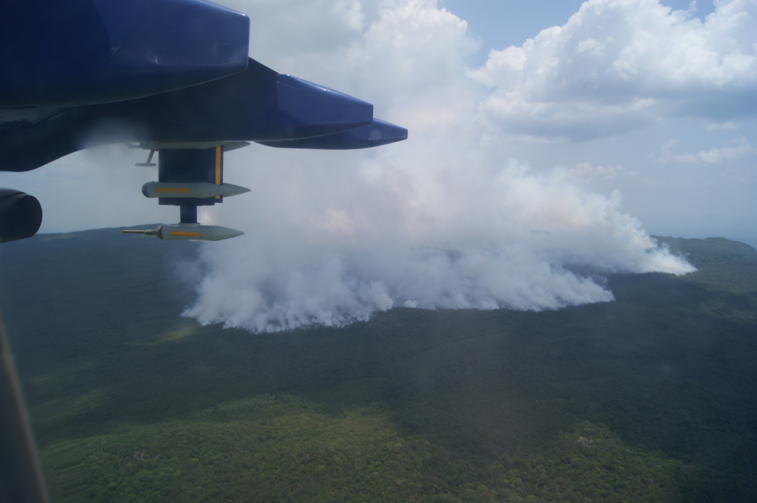Menu
SAMBBA

The SAMBBA (South American Biomass Burning Analysis) consortium aims to improve our understanding and representation of biomass burning aerosols in the climate system and in models. My involvement at Reading has been climate modelling of biomass burning aerosols (BBA), in order to test the sensitivity of the semi-direct effect to the amount and optical properties of BBA.
At Reading, we have been studying how increased or decreased BBA emissions, and increased or decreased single scattering albedo (the amount of absorption from BBA) may determine how or whether clouds form in the South American region, using the HadGEM3 climate model. As of 2015, Gill Thornhill has taken over this research. See Gill's latest paper, where we show that increased BBA emissions result in decreased cloud cover (via the 'burn off' effect and changes to atmospheric stability combined), decreased surface temperature, and 15% reduction in precipitation in September. Since increased emissions have a tendency to occur in drought years, the increased emissions may exacerbate the impacts of drought by further reducing precipitation.
Intriguingly, the amount of absorption from BBA over southern America appears to have increased over time, potentially due to the increased scrubland/agricultural buring which releases different amounts of black carbon to forest burning, due to the different vegetation types involved, and different smouldering natures of the different fires. The FAAM BAe146 aircraft observations also found an east-west difference in absorption, with the scrubland burning showing less absorption. A further set of experiments at Reading is investigating the impact of the amount of absorption in BBA on climate.